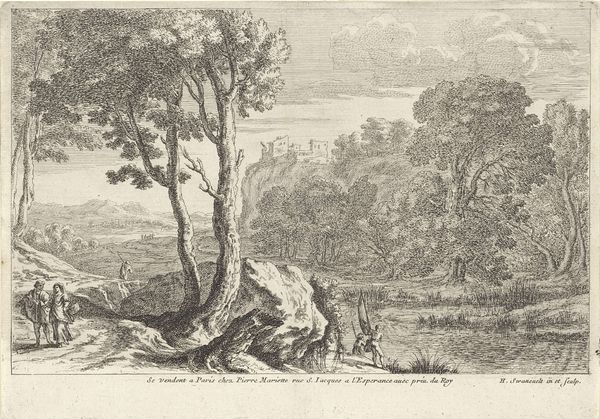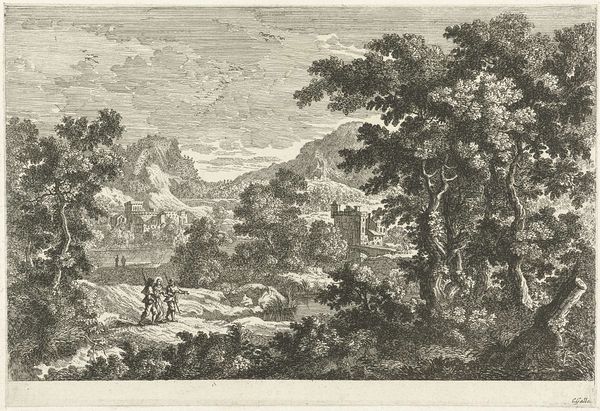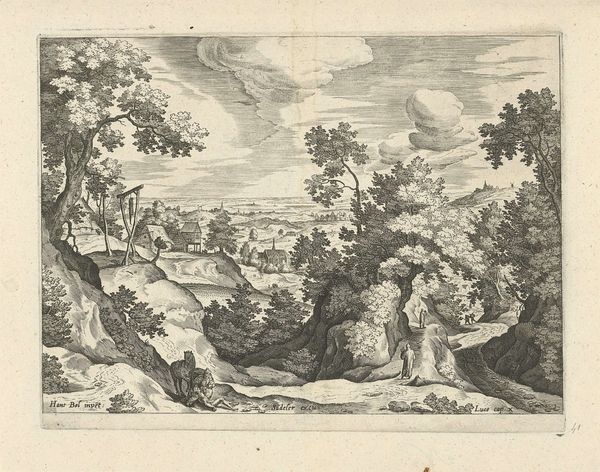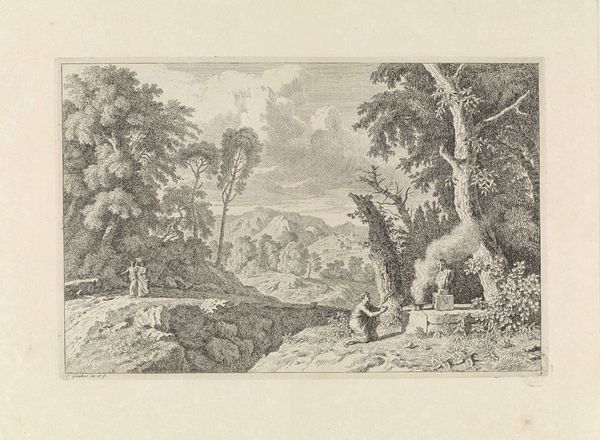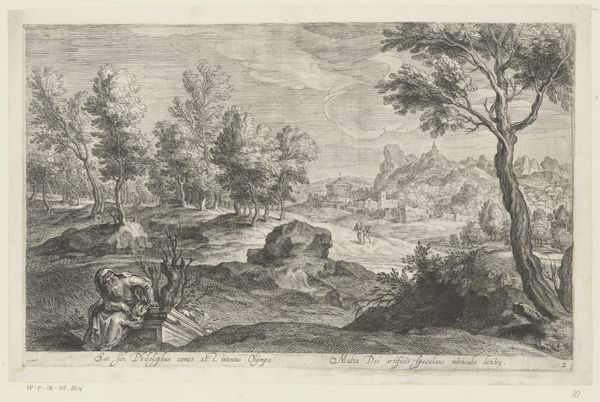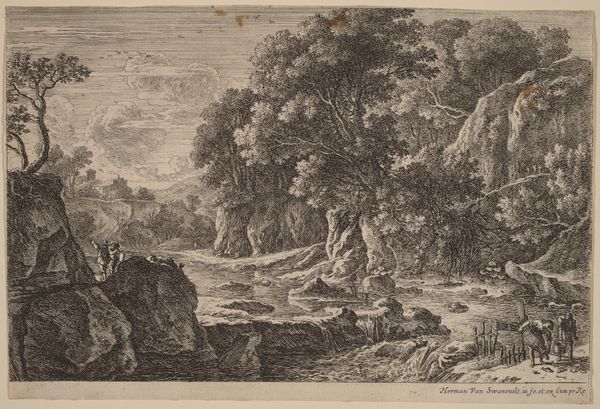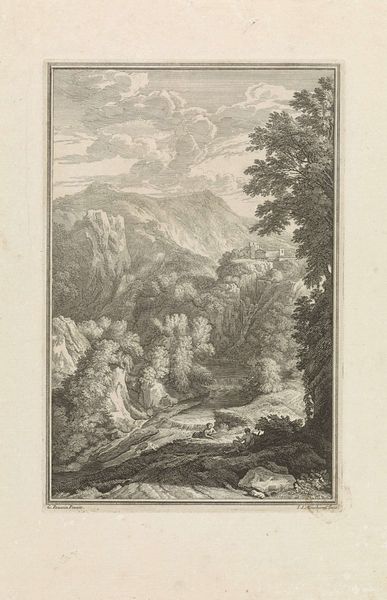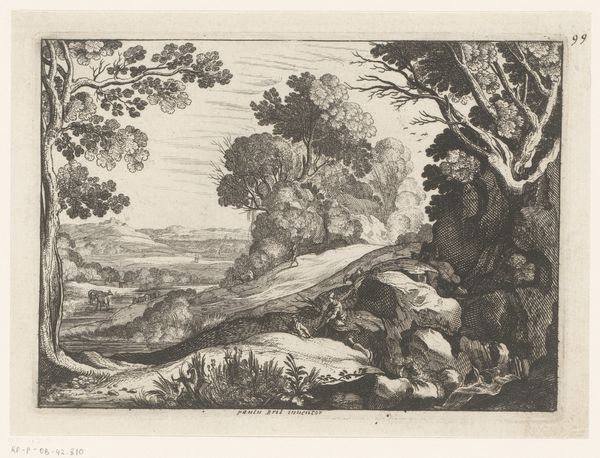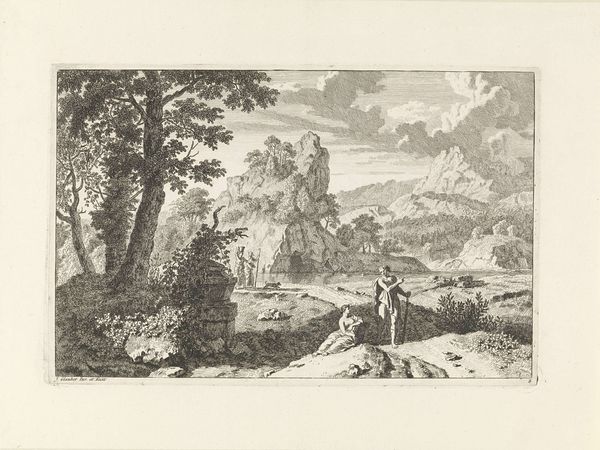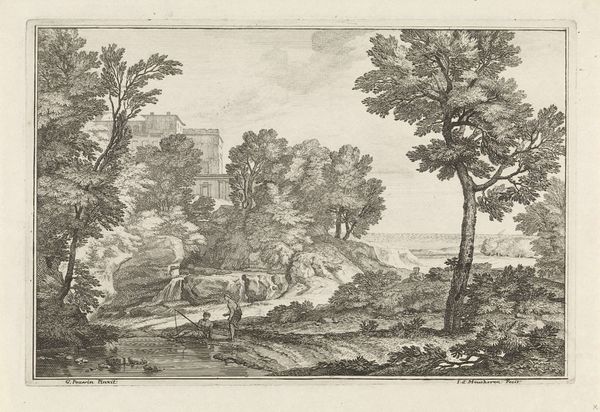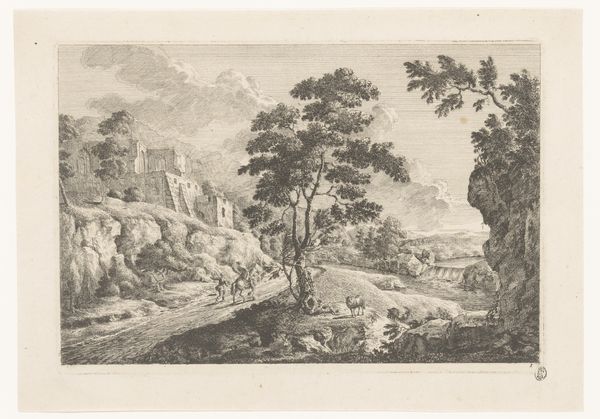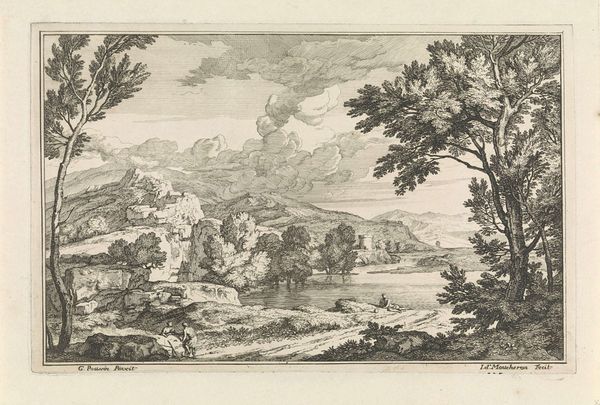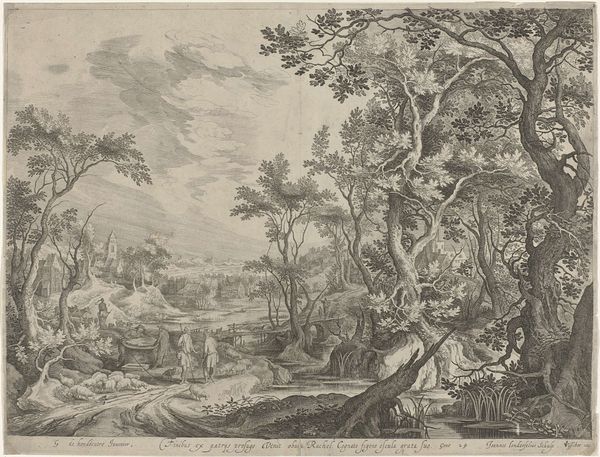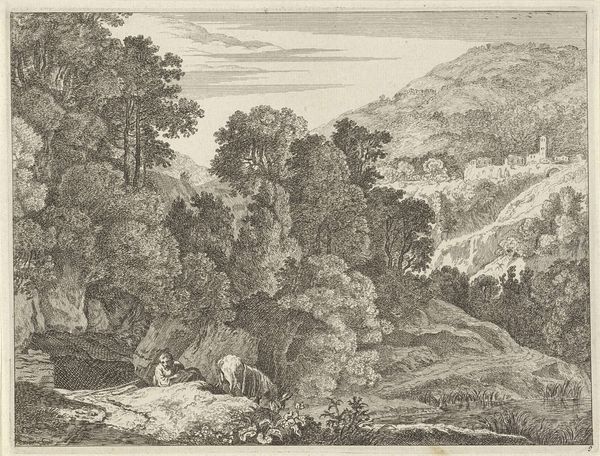
etching, engraving
#
baroque
#
dutch-golden-age
#
etching
#
old engraving style
#
landscape
#
waterfall
#
river
#
engraving
Dimensions: height 172 mm, width 258 mm
Copyright: Rijks Museum: Open Domain
Curator: Here we have Isaac de Moucheron's "Landscape with a River and Shepherds", an engraving dating back to the late 17th or early 18th century. Editor: It feels... wistful. The detailed rendering almost makes me want to reach out and touch the leaves of those grand trees framing the scene. Curator: Moucheron was deeply influenced by the Dutch Golden Age landscape tradition. Think of artists like Jacob van Ruisdael. What makes Moucheron unique is how he merges it with his own baroque sensibilities, seen in the composition’s grandeur and the detail. The way he captures nature wasn’t solely about objective observation, it was steeped in allegory. Editor: Allegory, you say? To my eyes, the presence of shepherds indicates an almost idyllic rendering of labor and rural life. There's something deeply class-based and even propagandistic about idealizing the labor of people, even when the reality was likely very different. I'd wonder about its impact on its audience. Curator: The intention of the image could also to bring to mind the classical pastoral tradition and invoke a connection between the wealthy owners of land and the shepherds who managed them. During this period landscapes were designed to both showcase and maximize the productivity and aesthetic experience of the land. Editor: It’s unsettling to consider the power dynamics hidden within these picturesque views. The technical skill is undeniable, especially in the way Moucheron renders light and shadow through line work. The figures are dwarfed by the landscape, but in whose interest did that imagery serve? Curator: We have to think about patronage, about who was commissioning these images. Landscapes like these helped the elite express control over both the land itself and also, visually, the narrative of their world. Editor: Exactly. It's important to question whether landscapes like this were ever intended for the working class, or rather for those who sought to reaffirm their authority over land and its inhabitants. Still, Moucheron invites us to consider our own place in a world vastly larger than ourselves. Curator: It’s an ongoing question: who does art represent and serve? I believe "Landscape with a River and Shepherds" offers a poignant example for further analysis. Editor: Yes, reflecting on those complexities enriches our engagement and offers a broader socio-historical awareness that informs not only our perceptions of art, but reality too.
Comments
No comments
Be the first to comment and join the conversation on the ultimate creative platform.
